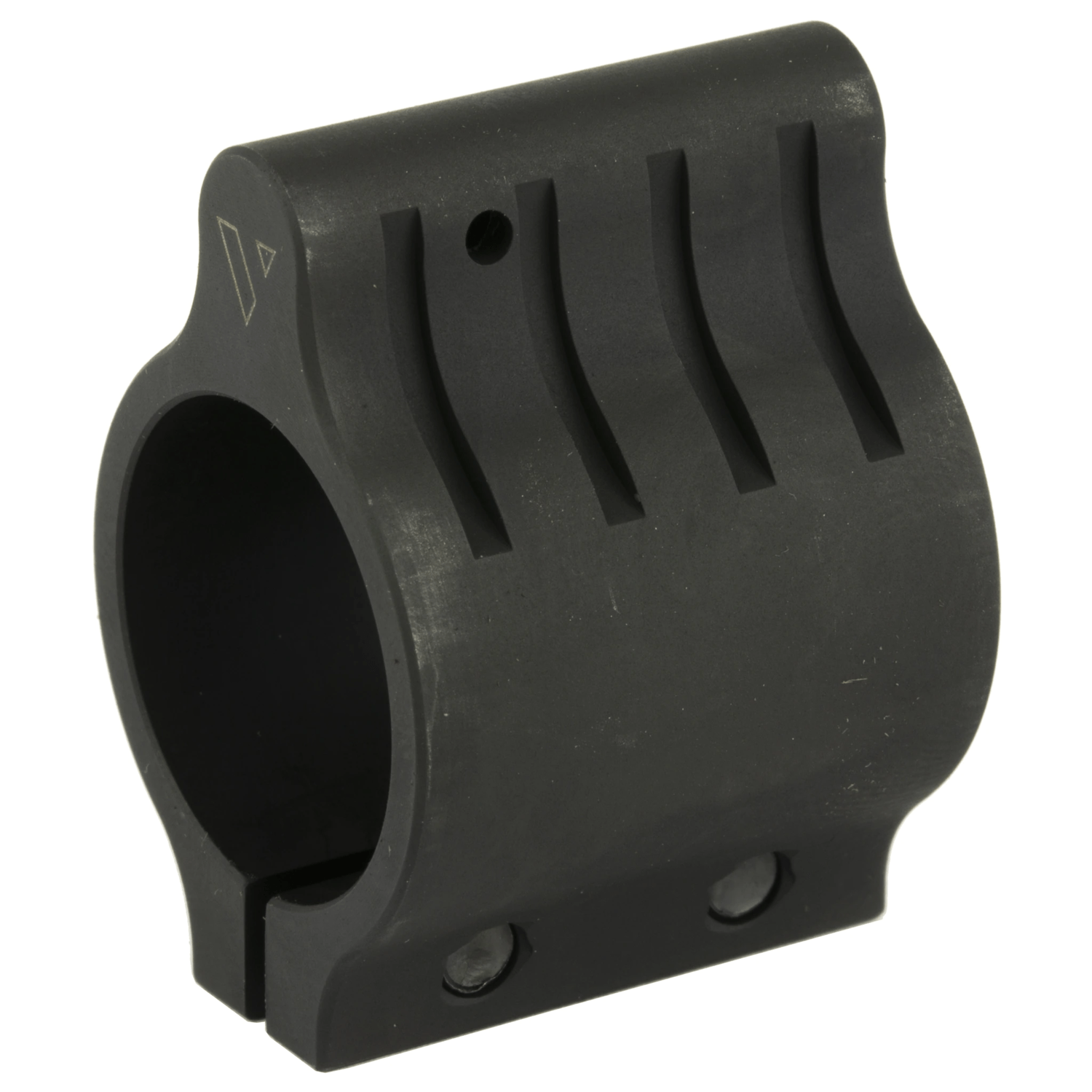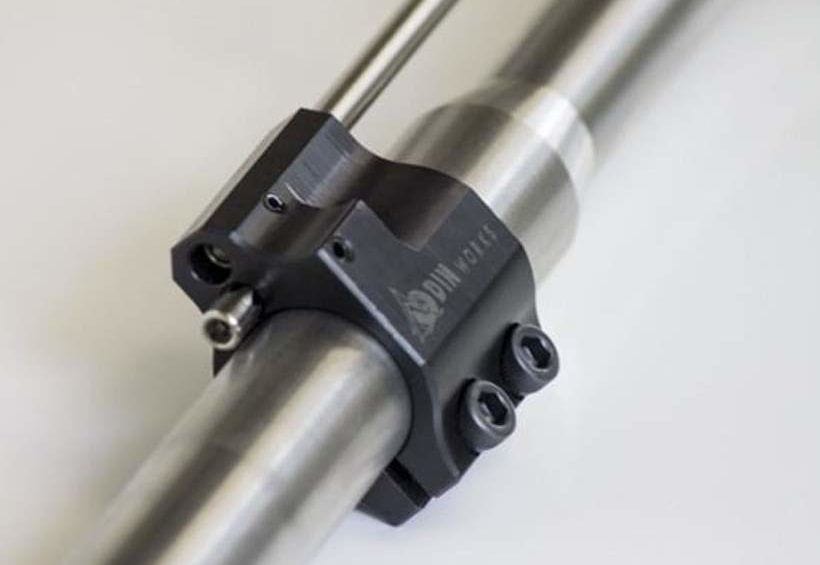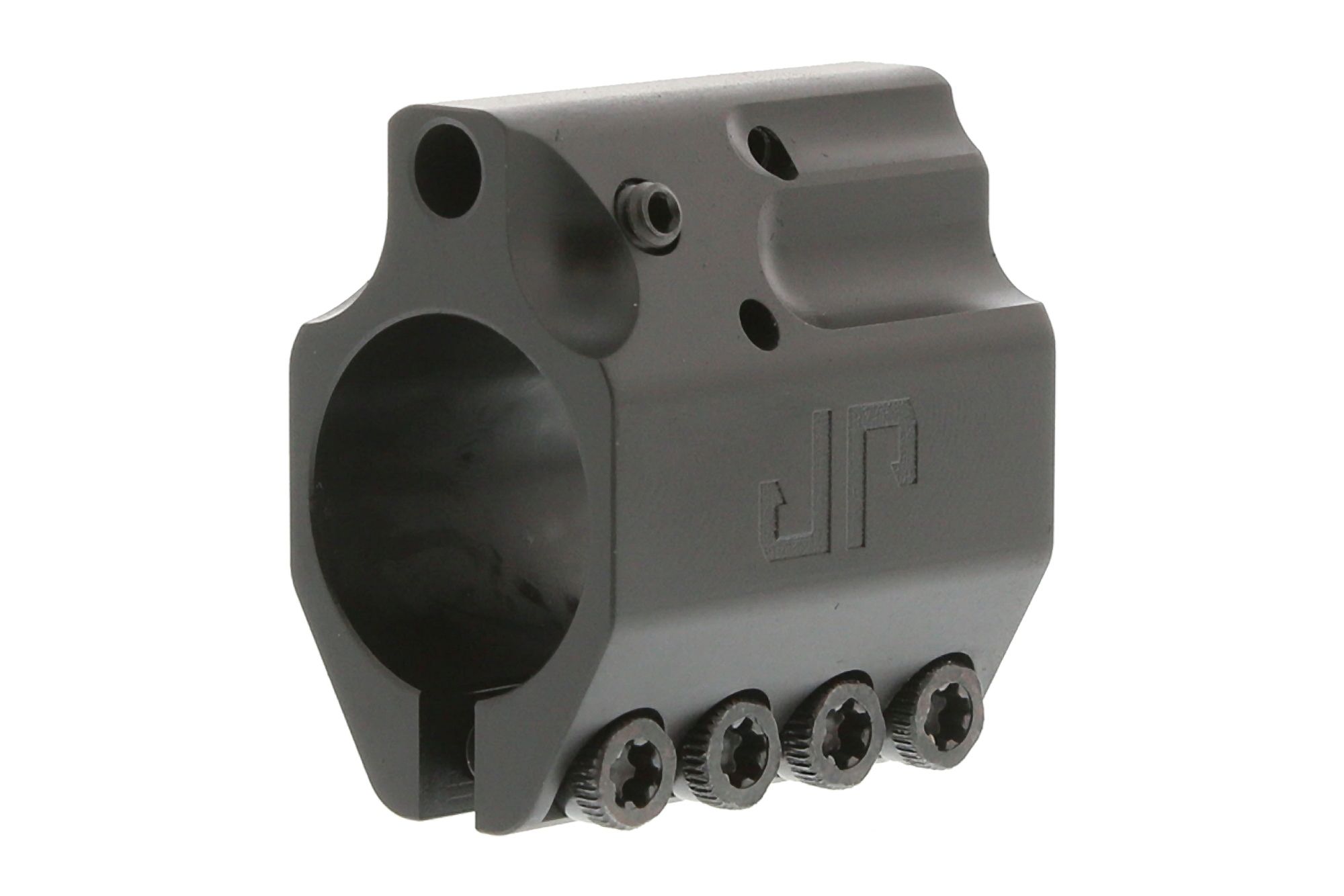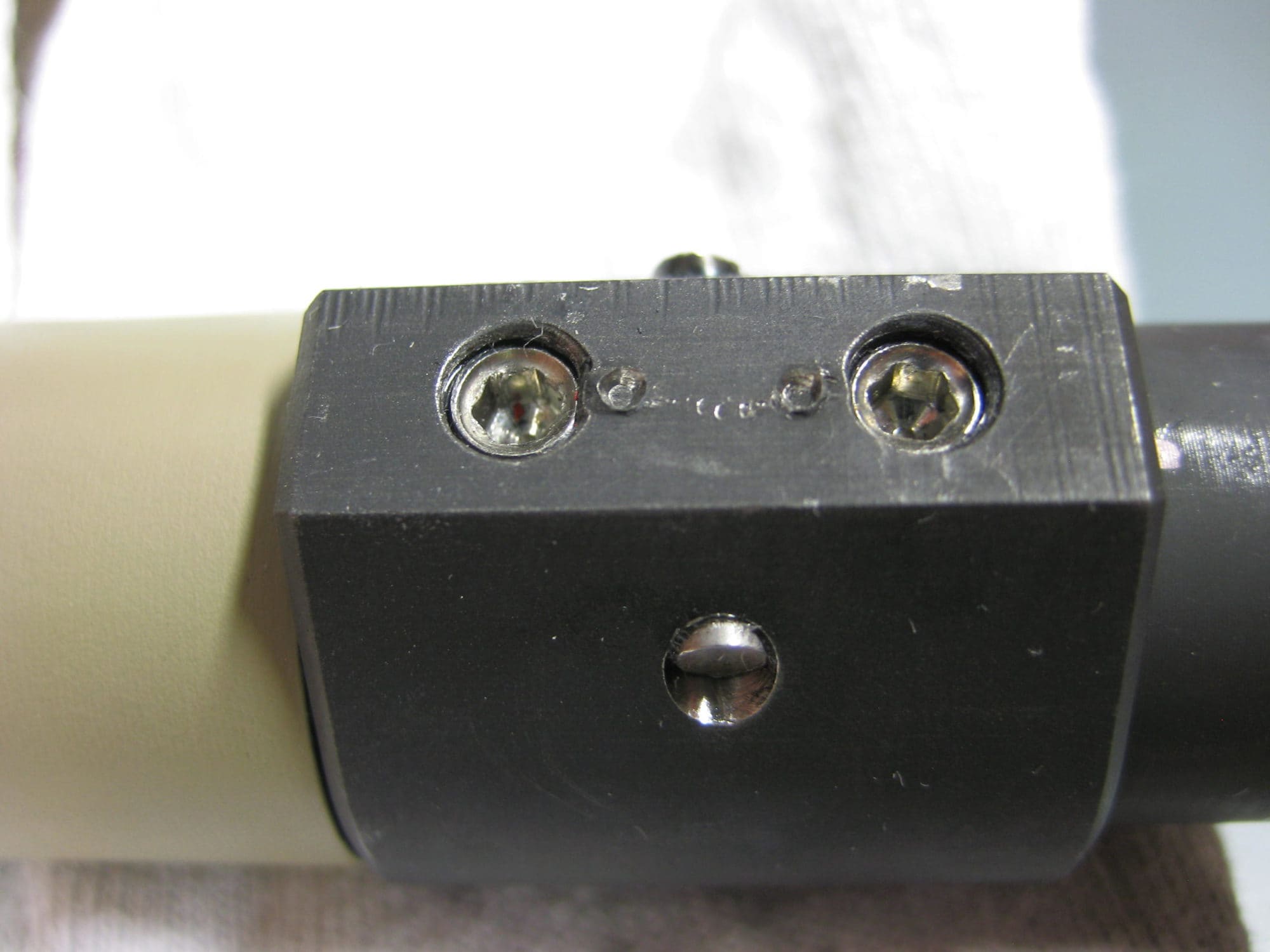If you have a rifle and use it with some regularity, chances are you’ll need a gas block.
They make your shooting experience cleaner and less bumpy, but which one to choose?
Learn everything you need to know in this guide before making up your mind.

Photo credit: thesurvivallife.com
Clamp-On Gas Block vs Set Screw
Clamp-On Gas Block | Set Screw Gas Block |
|---|---|
Pros | Pros |
Easy to mount and unmount | Very secure and tight |
It’s cheaper | Prevents gas leakage |
It doesn’t indent the barrel | Reliable for intense shooting sessions |
Cons | Cons |
Can be affected by heavy shooting sessions | Indents and pins the barrel risking damaging it |
Hard to align | Requires gunsmithing |
Some models are not compatible with free float barrels | Usually more expensive |
Best For | Best For |
Perfect for hunters or those who shoot as a hobby. If repetitions are not too fast or for too long, it’s a very reliable and simple mounting system | This system is the choice of the military. Its secure and stable fixation can handle extenuating combat situations |
Relevant Characteristics Between Clamp-On Gas Block and Set Screw
Can’t decide which mounting system is best for you? First, you need to understand the main differences and similarities between them. Then, you can choose which one better meets your needs. Below, there’s a short table contrasting some of their most essential features. Those features will be further explained in this article.
Clamp-On Gas Block | Set Screw Gas Block | ||||
|---|---|---|---|---|---|
 Photo credit: bigcommerce.com |  Photo credit: cheaperthandirt.com | ||||
Reliable except when dealing with long and fast repetitions | Security | Secure and stable, especially in extreme situations | |||
Generally bulkier | Size / Bulkiness | Low profile | |||
Easy to remove | Ease of Removal | Harder to remove | |||
Similarities and Differences
Both systems are designed to fixate the gas block on the barrel and resist moving from recoil. Still, there are some crucial differences between them, which make them best for different situations. We’ll approach those situations and particularities in detail in the following section.
Clamp-On Gas Block and Set Screw Differences
Purpose
Clamping systems are perfect for light or sporadic shooting sessions, especially if you don’t have too many repetitions per minute. When dozens of rounds are being shot per minute in extreme situations, set screws provide a more secure and stable gripping system. Set screws are also better at preventing over-gassing in those situations.
Set screws provide a tighter grip on the barrel, avoiding leakage that can be made worse by lengthy shooting sessions. For those reasons, set screw systems tend to be more expensive, as they are the common choice of specialized or frequent shooters.
Format
Perhaps their main difference lies in how they act on the barrel: while clamping doesn’t require any adaptations or indentations on the barrel, set screws require dimpling and, frequently, pinning as well.
Set screws are low-profile and fit easily on free-floating barrels, while some models of the clamping system may not. While clamping doesn't require specific tools, it can be more challenging to align with the gas port than the set screw ones. Despite generally being bulkier, clamping systems are easier to mount and unmount.

Photo credit: arbuildjunkie.com
Pinning
Pinning the gas block is a step further on gripping it tightly on the barrel. It’s probably not the level of gripping you’ll need on your weekend hobby or for hunting in the woods, but it can be the difference between life and death in combat situations.
That’s why they are more common on military weapons than on civilian weapons. Most military rifles come equipped with set screws pinned already. If you’ve chosen clamping blocks because they don’t indent the barrel, then there’s reason to pin it.
Clamp-On Gas Block and Set Screw Similarities
Gas blocks are an essential part of any frequently used rifle. It prevents clogging from over-gassing, reduces recoil, and preserves your gun parts. Clamp-on and set screw are two different ways of mounting the same piece. Both systems can attach a gas block satisfactorily onto the barrel, depending on your shooting habits.
Advantages of Clamp-On Gas Block
Clamping is one of the most common ways of mounting a gas block. Its efficiency has been proven in many situations, from old weapons to motorcycles. Here are some advantages to this system:
Recoil Control
These devices were created to reduce recoil. On ARs, which are already low-recoil firearms, clamping can reduce recoil even further, consequently increasing stability. Gas blocks are mounted on the top of the barrel, and it blocks part of the gas (hence the name) that propels the bullet, redirecting it back to the chamber via a gas tube.

Photo credit: primaryarms.com
Easy Installation
That’s good news, especially if you're planning to mount it at home and don’t have many tools. Mounting with a clamping system can end up being cheaper for this reason. This system also allows for an equal mass distribution along the barrel.
The holes of the gas port and the gas block are slightly different, tolerating small misalignments. Clamp-on systems don’t require dimples, and if we are not talking about a gun for long shooting sessions, pinning it is probably an over-precaution. In short, they make things simpler.
Accuracy
Some specialists frown upon dimpling or pinning the barrel. They argue that such interventions can damage the bore inside the barrel, thus negatively affecting accuracy. Because clamping systems distribute the stress more evenly, it doesn’t have any pressure points on the barrel, and it’s almost like it’s not there.
Some users report an increase in accuracy after adopting this system. Clamping systems work well with railed gas blocks. Those rails provide the base for mounting a sight piece, which results in more accuracy.
Clamping systems are efficient for hobby shooters, for they are simple to mount and resist well in ordinary shooting situations. For the materials alone, clamping costs less than other systems, in addition to saving you the costs of gunsmithing.
This system can be found on old weapons, holding the already outdated railed gas block with rails to mount the front sight. They can come in different profiles. So, if you use a free-floating barrel, for instance, pay attention to what profile you’re buying because some of them may be too tall to fit under it.

Photo credit: pinterest.com
Advantages of Set Screw Gas Block
Secure Mounting
The set screw is the most common system of mounting a gas block. Set screws are easy to mount and fit very well on free-floating barrels. Set screws are popular for a reason: apart from being easy to mount, it also provides an extremely tight fixation on the barrel, so you can be sure it won’t move.
This kind of mounting is the safest option for stressful situations, but you can (and should) tighten it even further by dimpling it. It should be mounted against the gas port to provide it with a secure position. Usually, the screws are installed with Loctite to increase grip.
Clean Work
Set screws allow for effortless alignment between the gas block and the gas port. It pulls the gas block very tightly against the barrel, preventing gas leakage. Gas leakage can cause erosion, thus reducing the durability of your gun parts. Better gas management leads to cleaner functioning, reduced wear and tear on the rifle, and more recoil control.
Profile and Alignment
Set screws gas blocks are low-profile and can replace a sight piece. Different from some tall clamping gas blocks, they fit nicely on free-floating front ends. Usually, they are less bulky than clamp-on parts.
Set screw gas blocks are smaller and lighter than the clamps, making a difference on long journeys. With set screws, alignment can be precisely calculated, while it must be eyeballed with clamping pieces.
In contrast to clamping pieces, set screws don’t need holes in different sizes to tolerate misalignments. Because the holes on the gas port and the gas block can be perfectly equal, this system provides better gas absorption.
Set screws have been tested under pressure and stress, proving themselves secure and reliable. The military prefers set screws, mostly for this reason. They are more expensive and usually require gunsmithing for proper installation.
Still, they are the safest option for long and intense shooting sessions. This kind of gas block is generally reinforced by dimples and pins, further increasing its grip. Loctite should be applied to the screws.
Such a tight installation eliminates gas leakage, prolonging the rifle’s longevity by preventing erosion.

Photo credit: ar15.com
What About Pinned Gas Blocks?
Pinning gas blocks is an alternative way of mounting them on your rifle. It usually goes along with the set screw system, requiring dimpling, but they can be used with clamp-on systems as well. However, pinning requires more specialized tools, so you’d be better off visiting your gunsmith if you don’t have such tools or don’t know how to use them.
You also risk losing the manufacturer’s warranty if you don’t know what you’re doing. So, the best advice is to look for a specialist.
Amateurs can be defeated at step one when a hole must be drilled on the barrel in exact alignment with the gas port. This hole should also be drilled exactly above the gas port; otherwise, it won’t work correctly.
Many barrels come with dimples from the factory, but if that’s not the case, they should be made in opposition to the gas port for the set screws. Some users prefer pinned gas blocks to the set screw ones, claiming a more stable and reliable mounting.
It’s a crucial feature in combat situations, so the Army and police forces widely use it. It’s quite common to apply Loctite to the screws, so it’s extra tight. Pinning is not necessary for hunters or hobbyists.
It won’t affect accuracy or recoil control, and if you don’t plan on pushing your gun to its limits, you don’t need to worry about the gas block going loose. Besides, most ARs come with gas blocks already built-in, which should suffice for a light or moderate user.

Photo credit: reddit.com
Bottom Line
Gas blocks are essential parts of any rifle recoil management, gas distribution, and over-gassing prevention. Gas blocks also slow wear and tear on your gun parts. This article covered the most popular mounting systems for this essential gear. Which system is best? It depends on your needs.
Clamping systems are usually cheaper and don’t require special tools to mount them. They can be used on free-floating barrels if it’s a low-profile model. Set screws are the most common ones and often come built-in from the manufacturer.
This system provides a firmer grip, especially in proving situations. They are used in military weapons with an additional pin for tighter fixation.
People Also Ask
Gas blocks are simply and smartly designed to make your rifle work smoother and cleaner while handling inconveniences, such as over-gassing and overheating. There are some particularities regarding sizes and mounting systems. In this section, you’ll read more about some specific details for the most popular mounting systems.
Does a Gas Block Need To Be Pinned?
It’s not mandatory, but it is highly advisable. It can work without it, but some users report that the gas block went loose during an intensive shooting session. It can become an insurmountable liability, depending on your situation. Consider pinning your gas block, regardless of the mounting method of your choice.
Are Adjustable Gas Blocks Worth It?
Those blocks can’t be categorized as mandatory because most ARs come from the factory with built-in systems that do the job satisfactorily. Nonetheless, they can still enhance the shooting experience. They also increase durability for your gun parts since this system puts significantly less stress on them.

Photo credit: gunsandtactics.com
Do You Need an Adjustable Gas Block For a Suppressor?
It’s advisable to mount an adjustable gas block if you want to run a suppressor. It will increase your AR’s performance. Over-gassing is a common issue for AR rifles, and adjustable blocks and suppressors deal with this problem very well. Besides, it reduces residues in your gun, and helps to prevent overheating.
Are Ballistic Advantage Barrels Dimpled For Gas Block?
No, Ballistic Advantage barrels are not pre-dimpled. If you bought or are planning to buy one, be ready to dimple it yourself or order a gunsmith to do so. Some Ballistic Advantage models can come pinned already but still with no dimples.
How Hot Does a Gas Block Get?
It depends on a couple of variables. Consider how many bullets you’re firing per minute and for how long. After 20 minutes of shooting steadily at a rate of 10 shots per minute, the temperature at the block will make something in between 400F and 500F.
Does Gas Block Size Matter?
It matters because it must be of an appropriate size, according to your barrel’s dimensions. So, pay attention to your barrel’s diameter. Anyway, its mass is irrelevant regarding performance. So, it doesn’t matter whether you have a bulkier or a lighter one; all sizes should handle the heat just fine.


